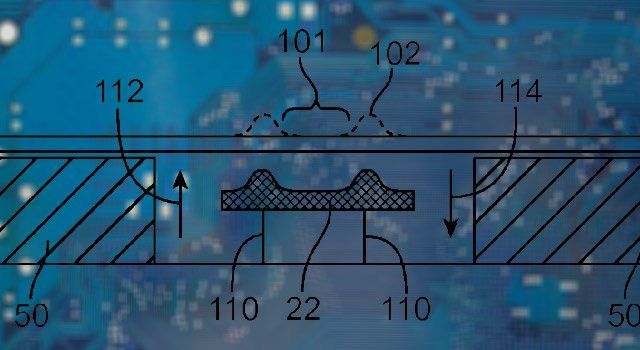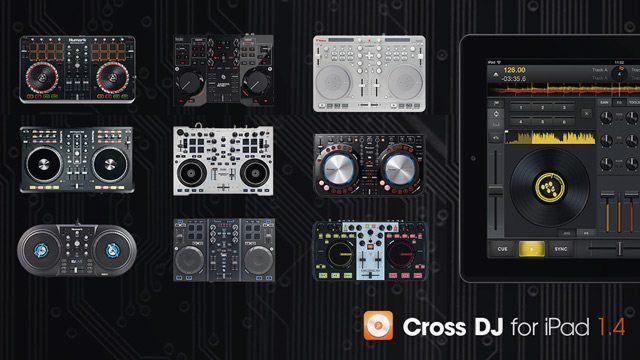Apple has reportedly been granted a very intriguing patent that suggests an exciting new world of touch technology that could permanently cement the iOS line in the music control market. The flexibility of touch screens has made them a favorite control surface, but their lack of tactile feedback has limited widespread adoption, leaving traditional buttons and knobs safe – for now. In a new patent filing Apple describes a potential new technology that allows flexible screens to morph and change shape – providing tactile feedback along with a host of other mind-blowing applications. While patents are often filed for the possibility of future application and not a guarantee of commercialization, we can’t help but image how cool the following applications would be for DJing and production purposes.
The primary function of a flexible display would be its ability to cover buttons, and flex when pressed. This would combine traditional buttons’ beloved click with the flexibility of a LED display. Imagine that the function or size of the button changed depending on circumstance, but the tactile feedback remained. Haptic sensors can also be used to provide vibration directly to the finger – imagine if you could feel the waveform while scrubbing through a song. No doubt you might be asking the question: but why are the buttons always in the same place?
“The ability of a user to compress a component such as a button switch by deforming the flexible display may allow the area of a device available for visual display to be enlarged. For example, the active area of a flexible display may overlap a component such as a button or speaker.”
The flexibility apparently goes both directions with the display able to produce ridges on demand, and in any configuration. Ideal for button outlines and keyboard indicators – control outlines help us find the button but lack any haptic feedback.
“If desired, a flexible display may be deformed by an internal component to provide audio or tactile feedback to a user. For example, structures inside an electronic device may be pressed against portions of a flexible display to temporarily create an outline for a virtual on-screen button or temporarily create a grid of ridges that serve to delineate the location of keys in a keyboard”
One of the more curious applications is the ability of the display to cover microphones and speakers, or other sensors that can detect pressure or force. At a minimum, this would provide true aftertouch and velocity but it may also mean some curious forms of rhythmic control.
“in some configurations, a portion of the flexible display may serve as a membrane that forms part of a microphone, speaker, pressure sensor, or other electronic component.”












